mending sock toes
-
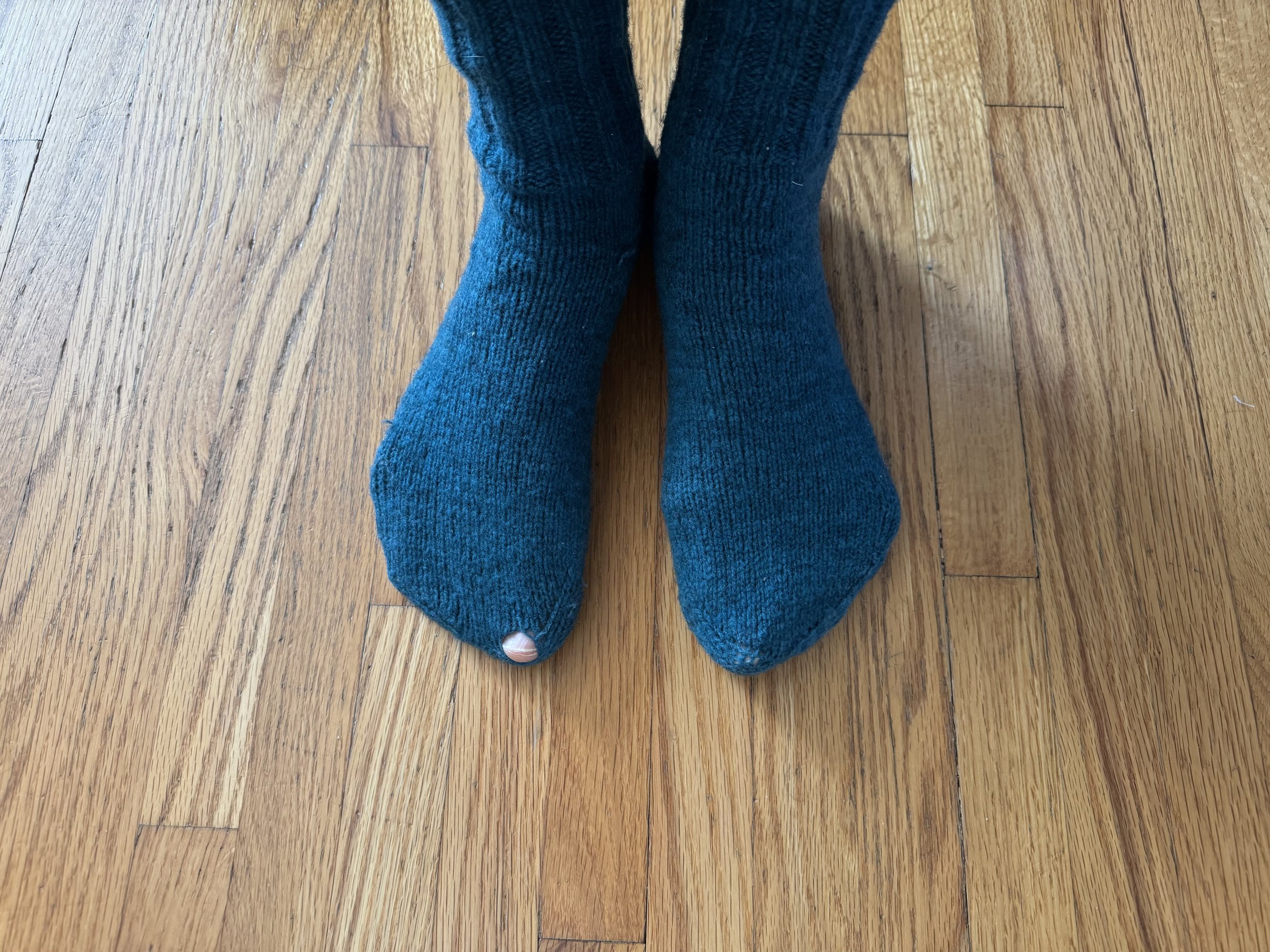
uh oh
I knitted these socks with what I think is Corriedale yarn and I reinforced the heels when I made them, but I did not expect the toes to explode after just a few wearings.
-
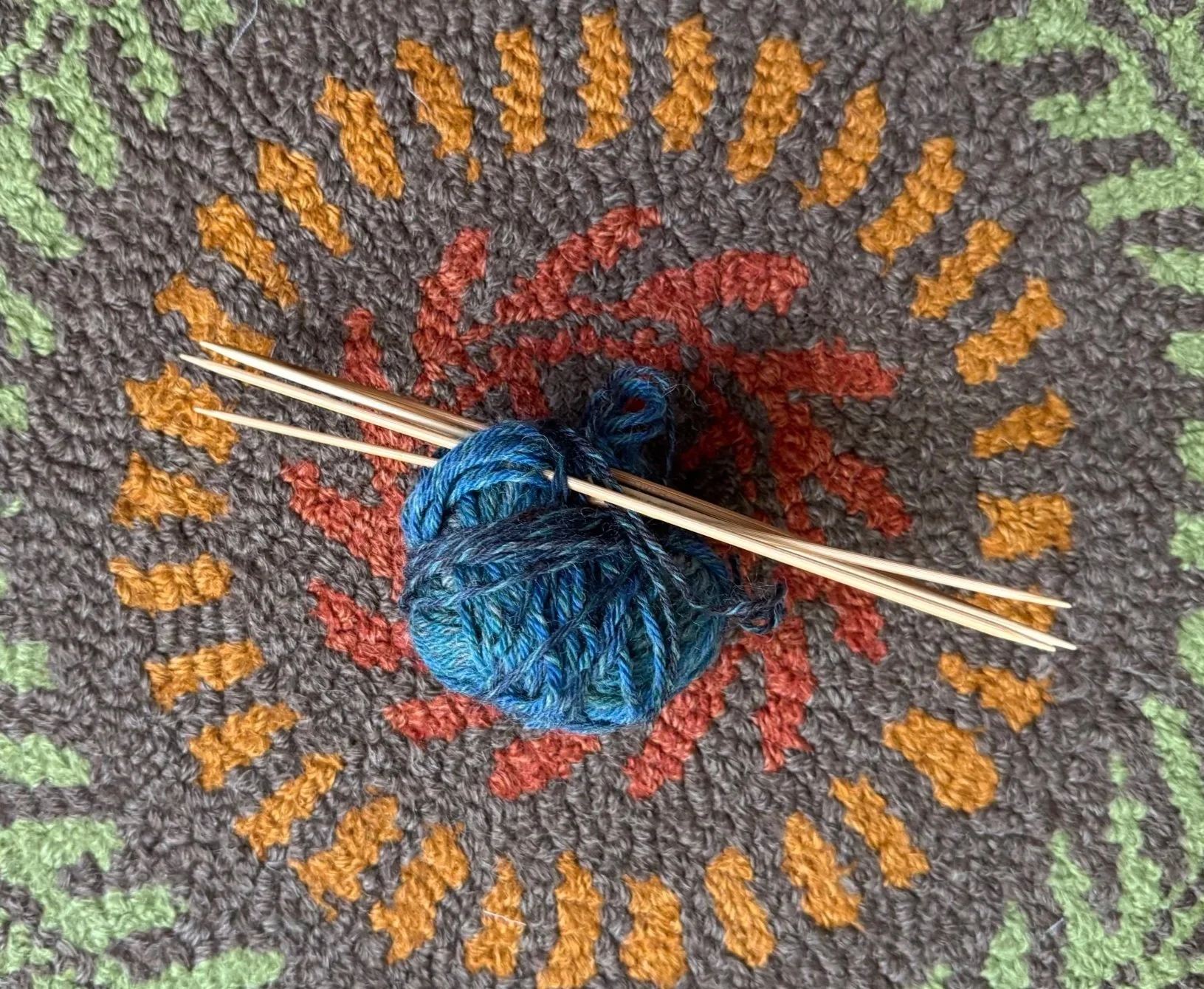
leftover sock yarn
I have no idea how to mend the toes and cannot guess how long any mending would last, so I am going to re-knit the toe part of these socks with some leftover sock yarn (Paton’s Kroy sock yarn, 75% washable wool, 25% nylon) and then graft the new toes onto the “old” socks. Over 90% of the sock will still be natural wool, but with a bit of a boost in the toes.
-

Here we are
Here we have two new toes and each is now living on two needles. I find it easiest to weave sock parts when I have two flat surfaces to work with, rather than the tubes that leaving the work on three needles would create.
-
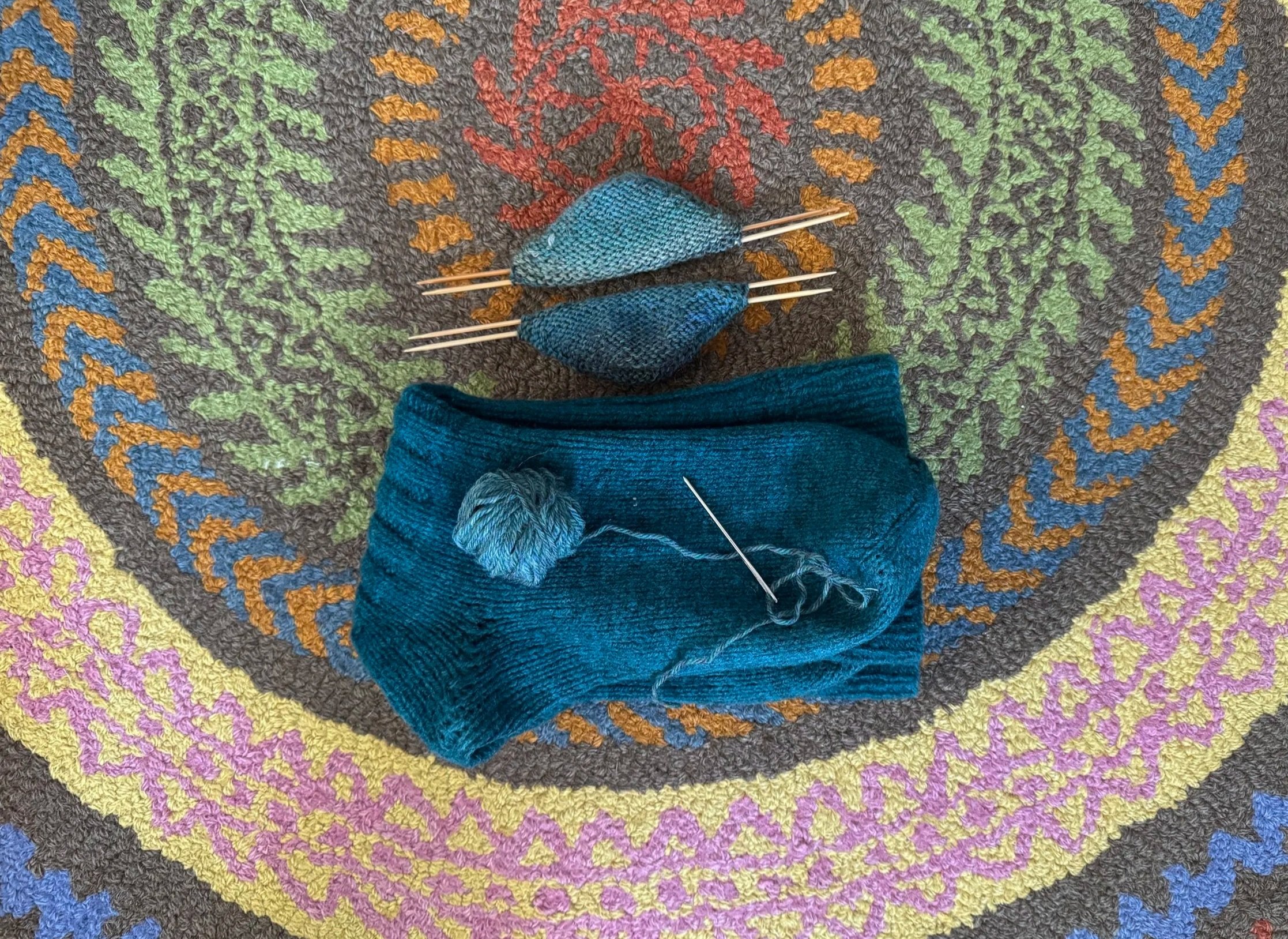
ends are woven in
It is also much easier to weave two pieces of knitting together when there are no loose ends. Metaphor?
-
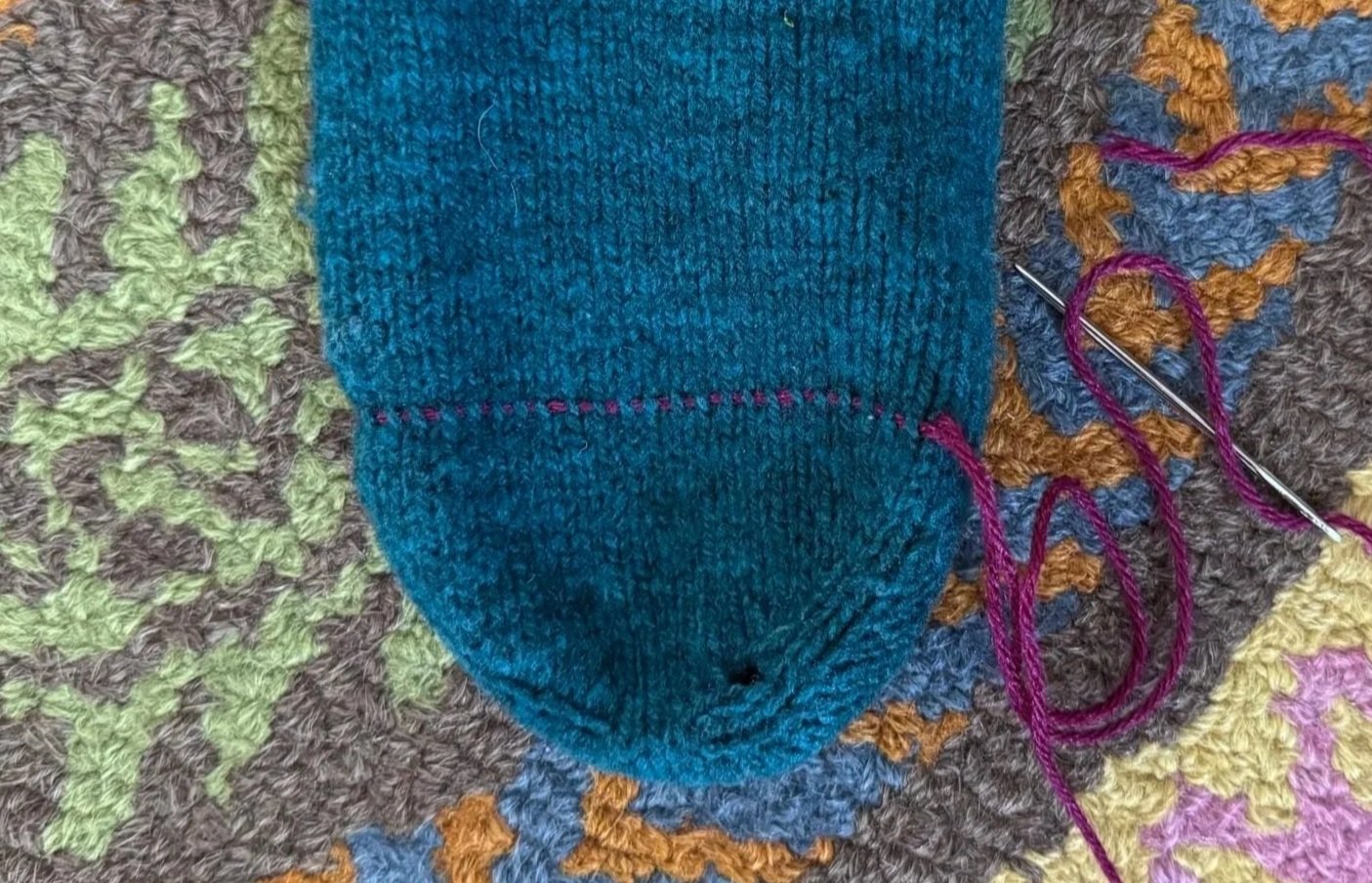
the next job
Time to find the row of stitches that are just above where I want to attach the new toe to the old sock. I pick up the left side of each stitch and put it on some waste yarn.
-
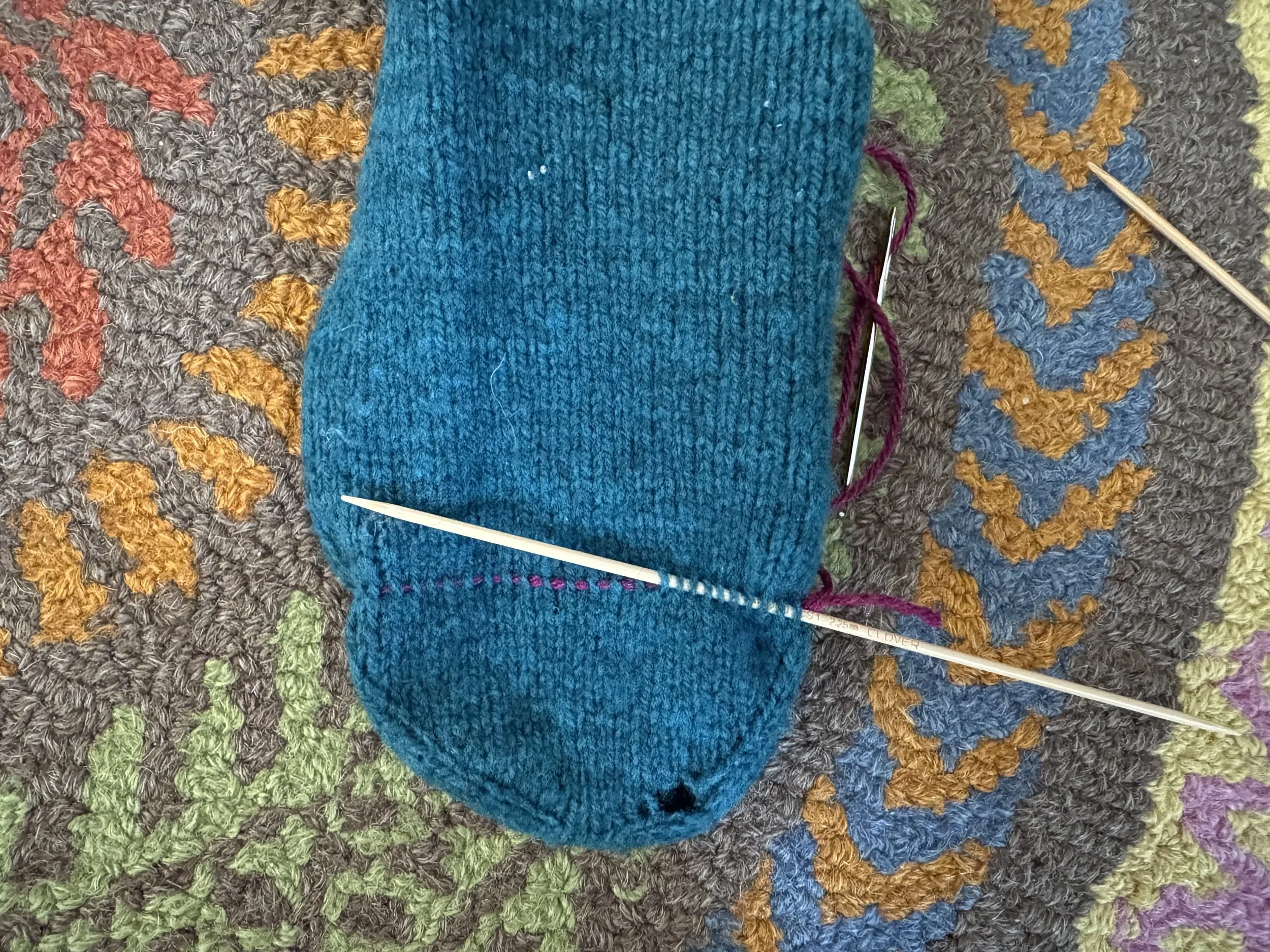
putting it on needles
Next I put half of the stitches on one needle and the other half on another needle. It can be bit of a trick to pick up the stitches on the sole of the foot because they are pretty matted.
-

one needle done
I keep the waste yarn on the stitches until the whole needle is full, and then I can pull the yarn out. Sometimes the yarn gets caught in the needle and has to be cut, but this way I am guaranteed not to lose any stitches.
-

the sole is rather stretched
No, I did not wash these before I performed this operation.
-

fear enters my heart
But this is where I remind myself that I have nothing to lose; I cannot wear these socks as they are, so I might as well try to repair them, even though the repair seems a bit drastic.
-
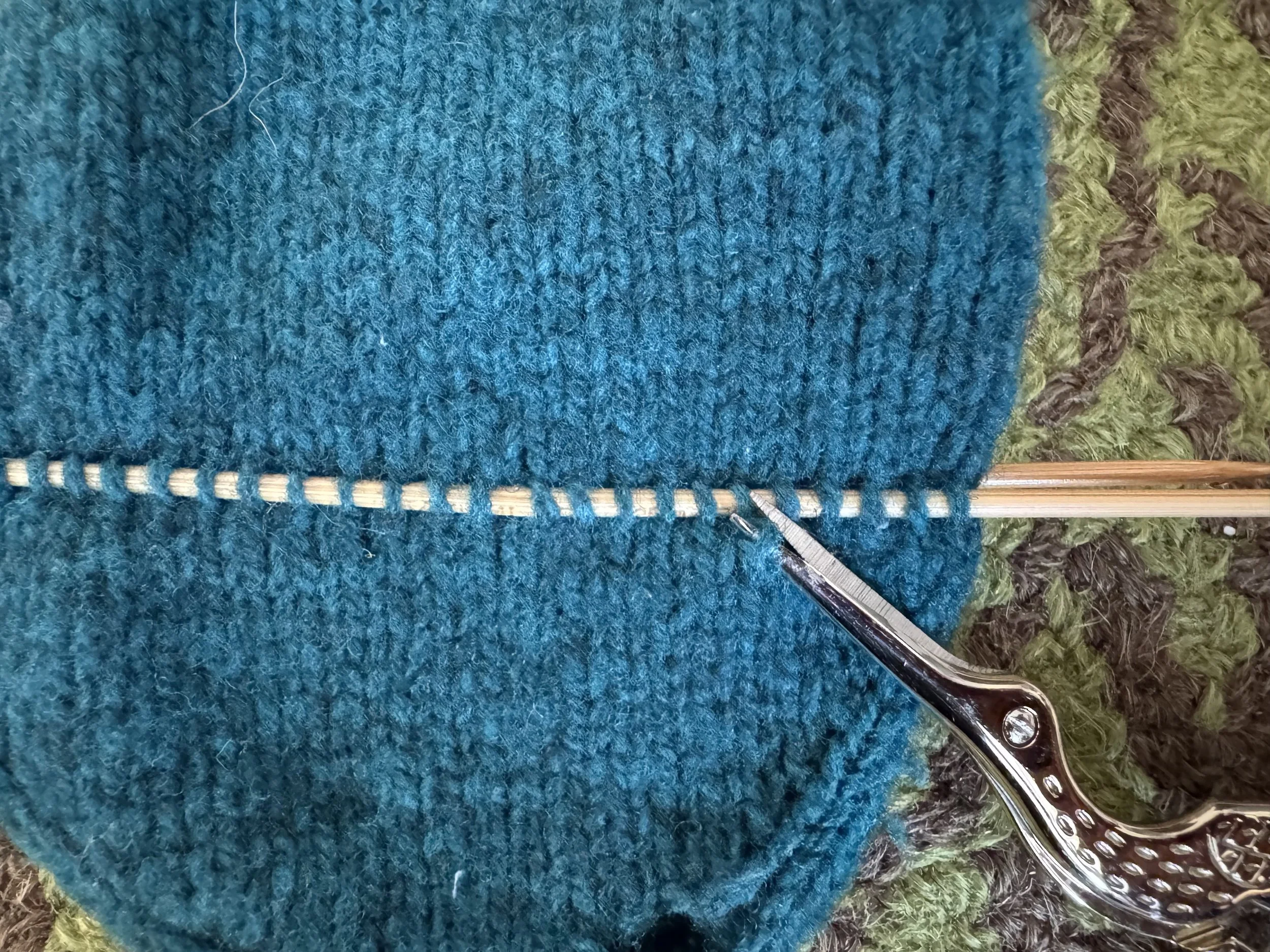
cinderella's stepsister comes to mind
This will be bloodless, however. By the way, do you see the big bend in the middle of my needle? It was cracked.
-
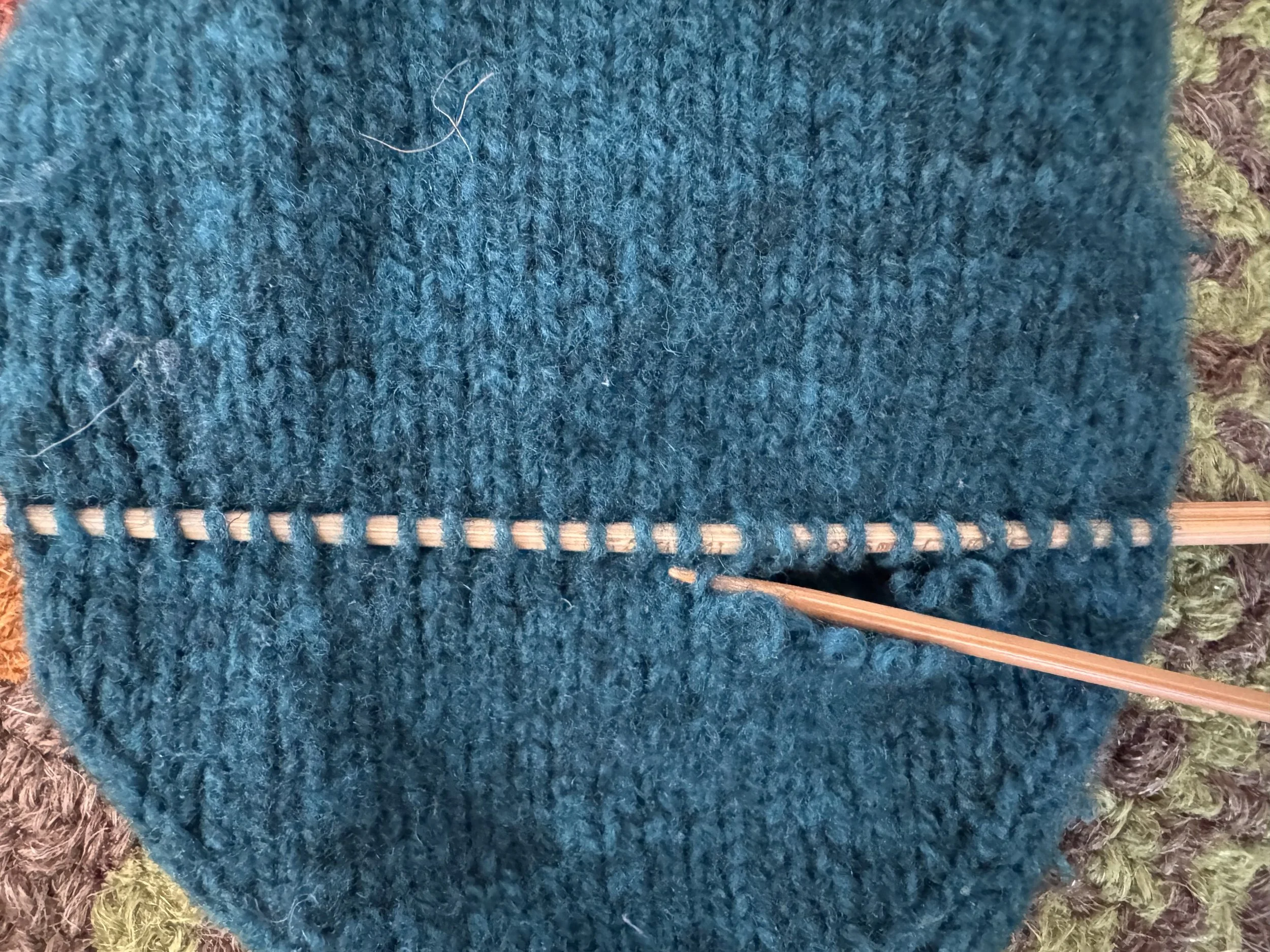
pulling out the row of stitches
A needle tip works well for this.
-
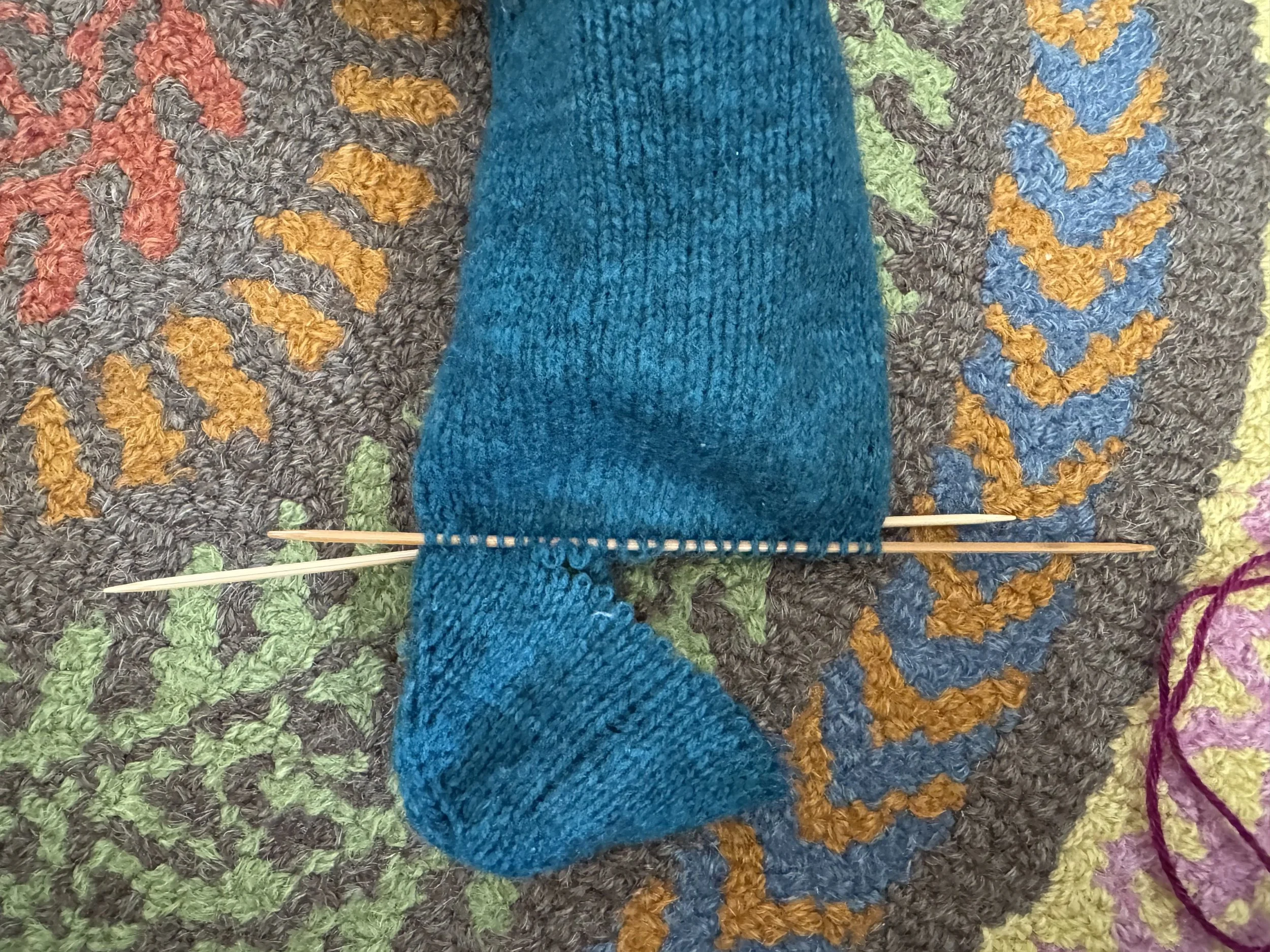
nearly all the way around
If you have ever knitted in the round, you know that circular knitting spirals. The beginning of a round is a bit higher than the end of the previous round. So, the two ends of my removed row probably won’t line up exactly. That is okay.
-
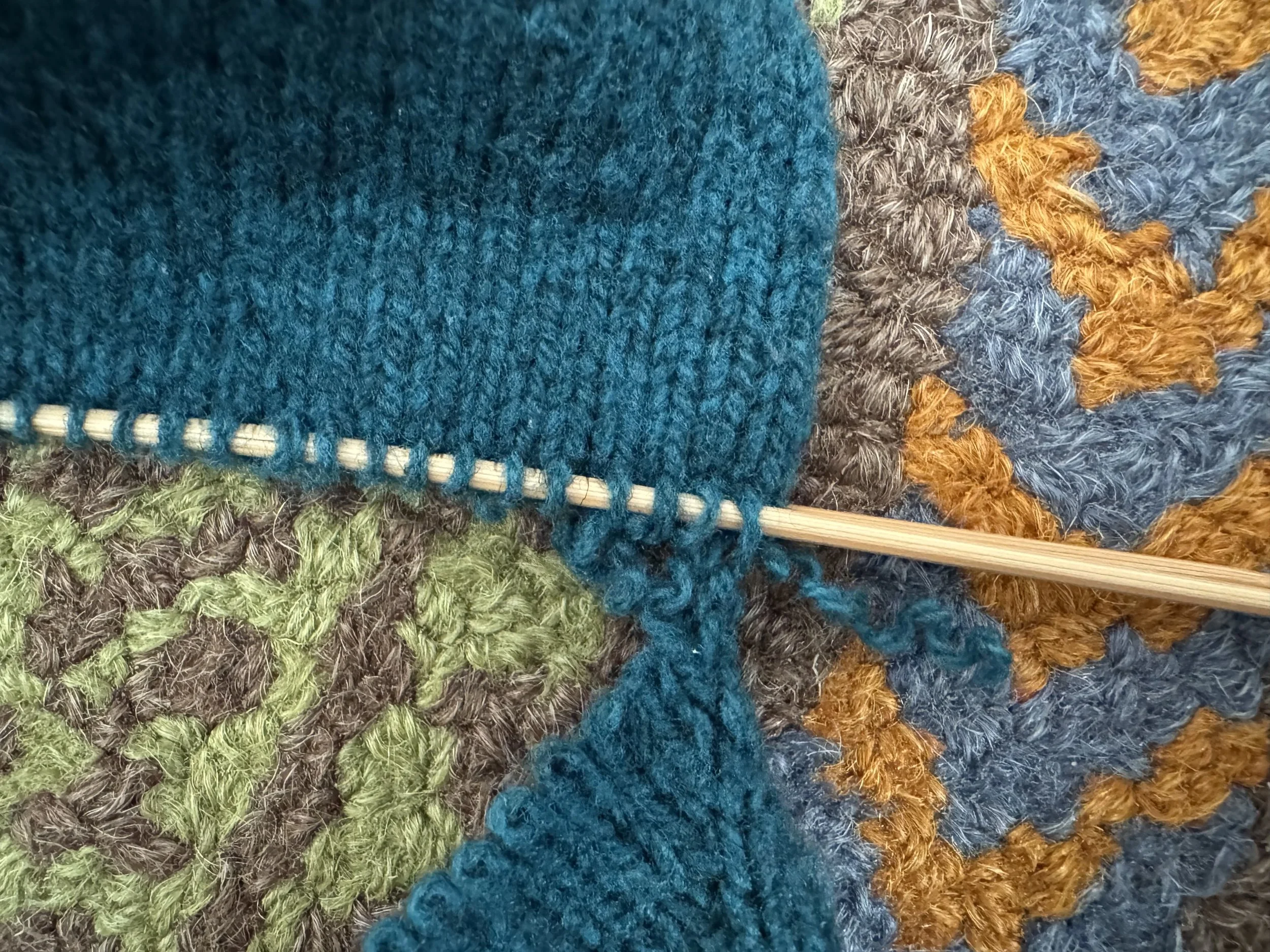
looks rather a mess
There are some extra threads here. I think they were threads that I wove in when I first made the sock.
-

not the clearest photo
but these are the last two stitches that need to be put on the second needle. Things look even. Luck!
-
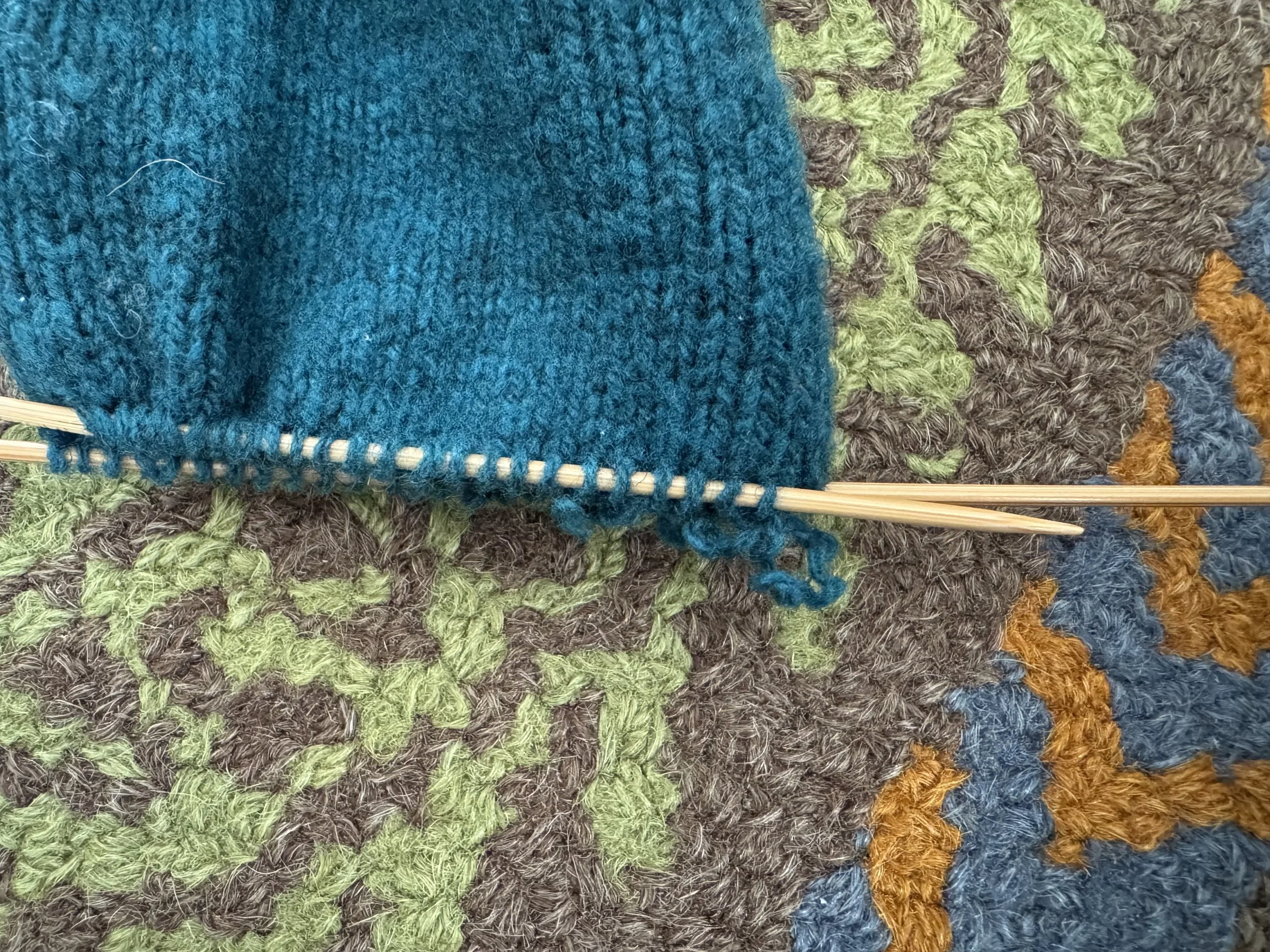
time to rearrange the stitches
For me, weaving goes much easier if all of the stitches are facing “knitwise” on the needles; that is, the first loop of each stitch is ready to be worked.
-
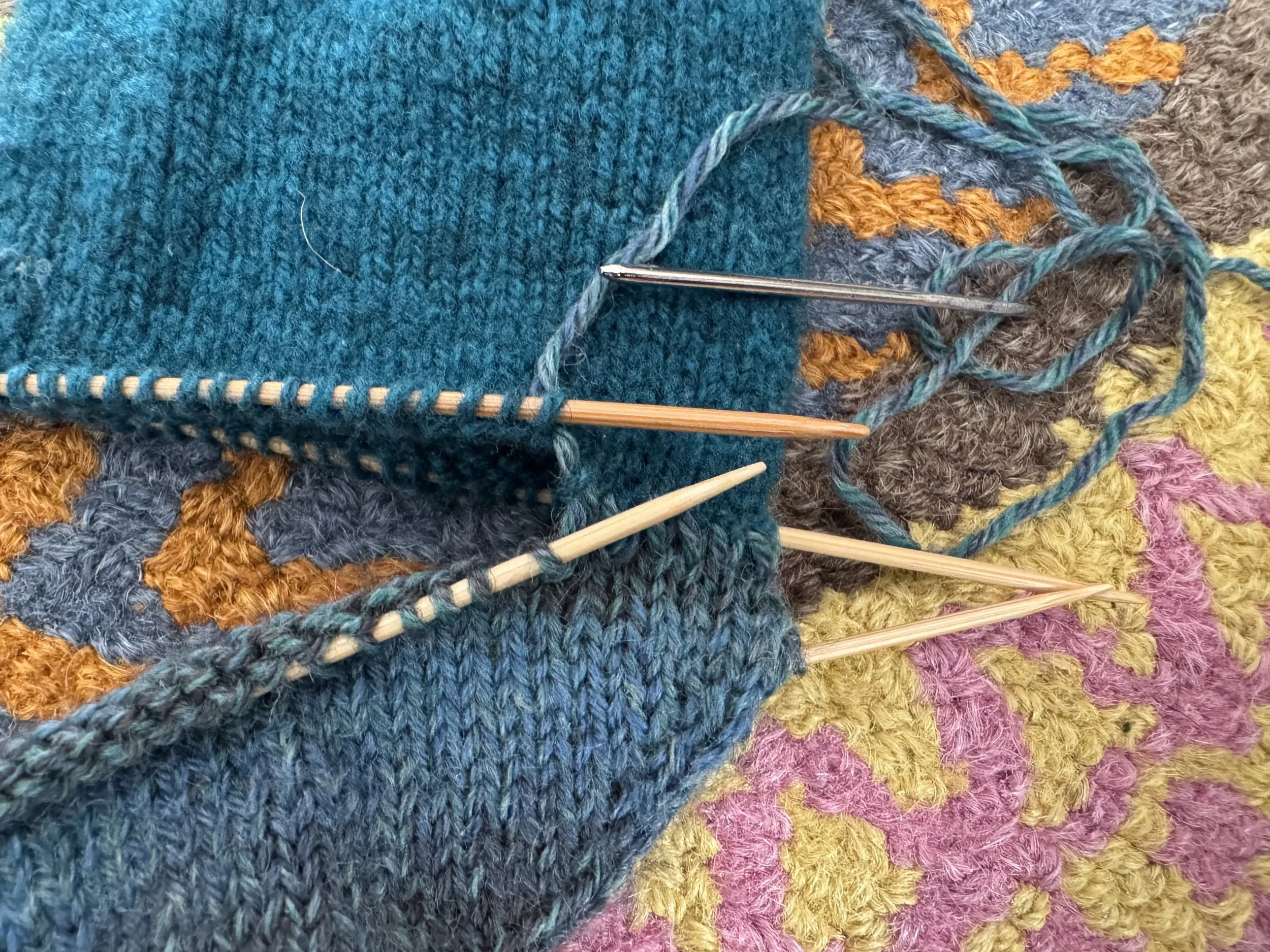
and we weave
The edges of the toe part have to match up with the sides of the sock part, to avoid any toe-twisting. I don’t think that it would matter much if one or two stitches were off kilter; socks are conforming beings.
-
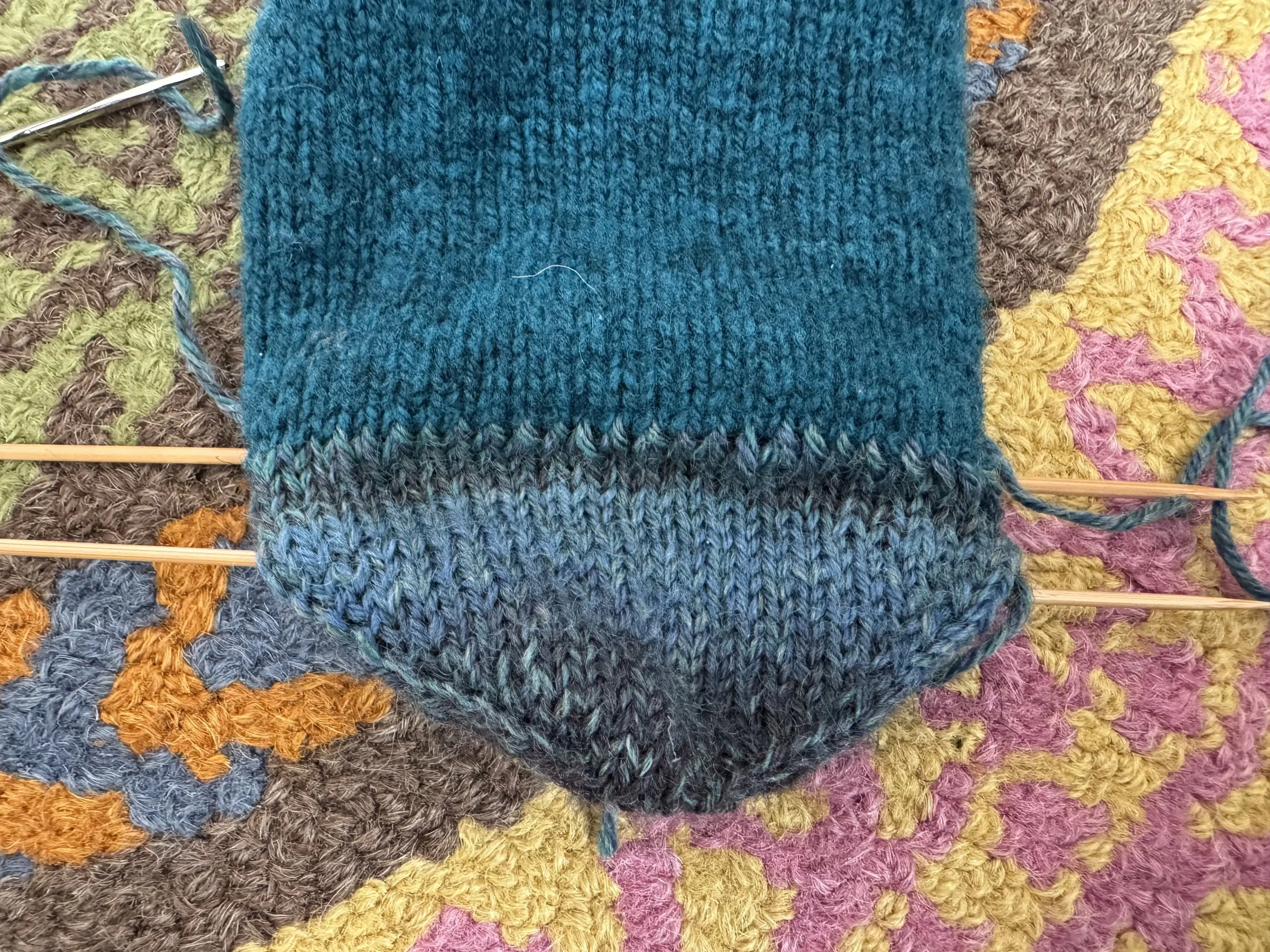
loose
I weave the stitches loosely on purpose; it is easy to make them too tight. The next step is to tighten what I have woven and then move on to the second pair of needles (i.e., the bottom of the foot).
-
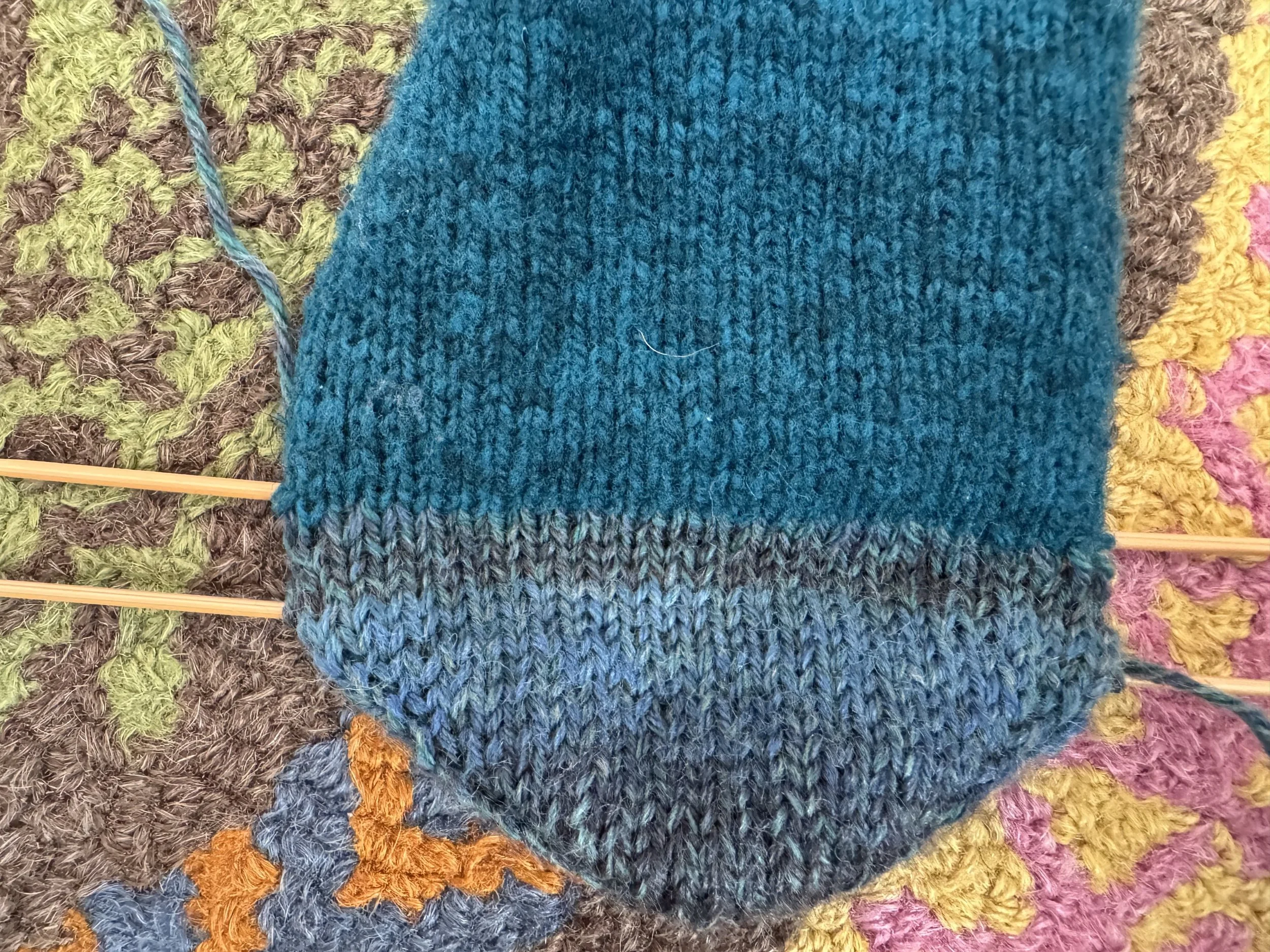
tight
-
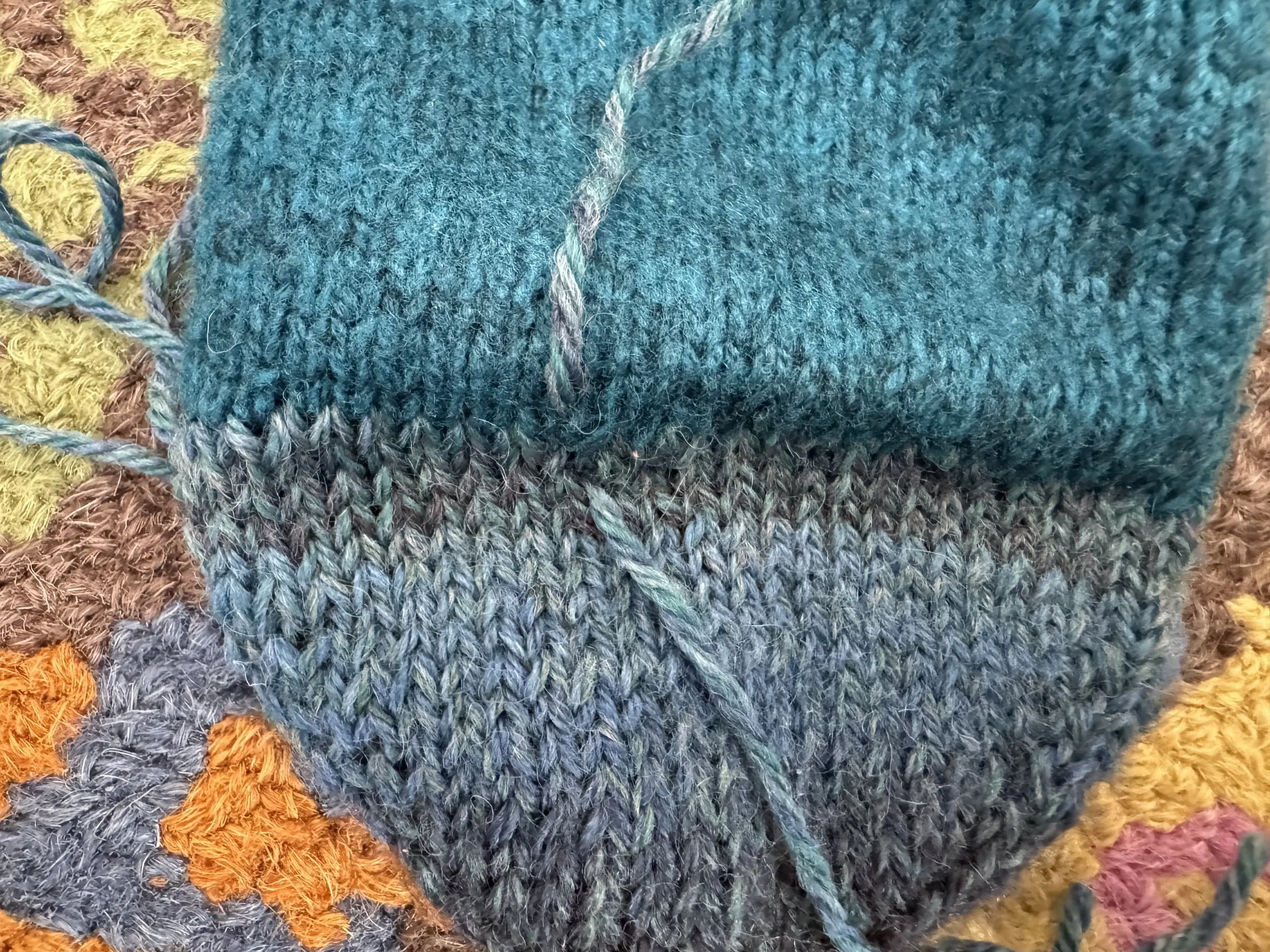
if you run out of sewing yarn
We all try to avoid this, but it can happen. Just pretended it didn’t. Start with a new sewing yarn and leave two long tails to deal with later.
-
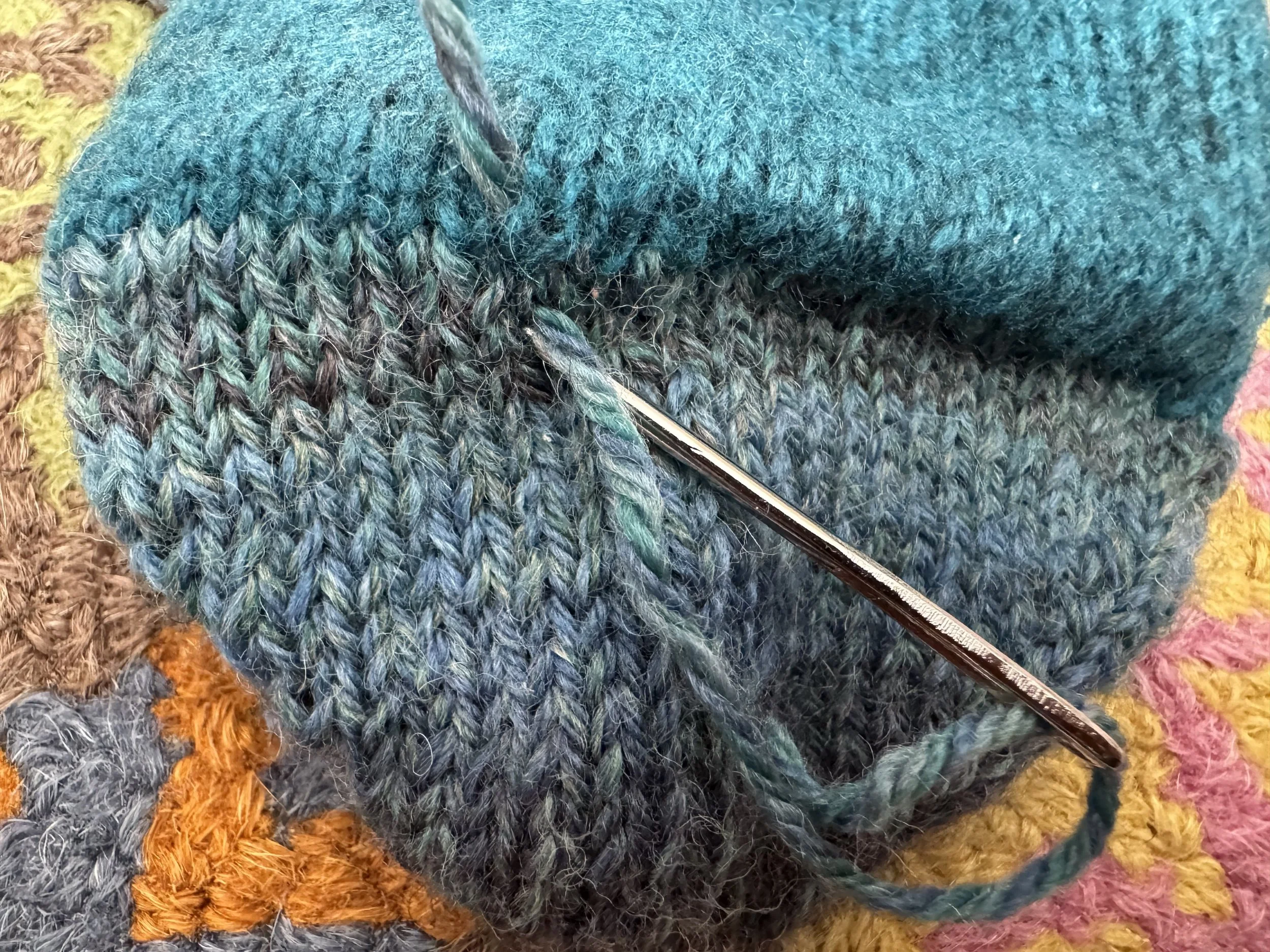
one end goes in
-
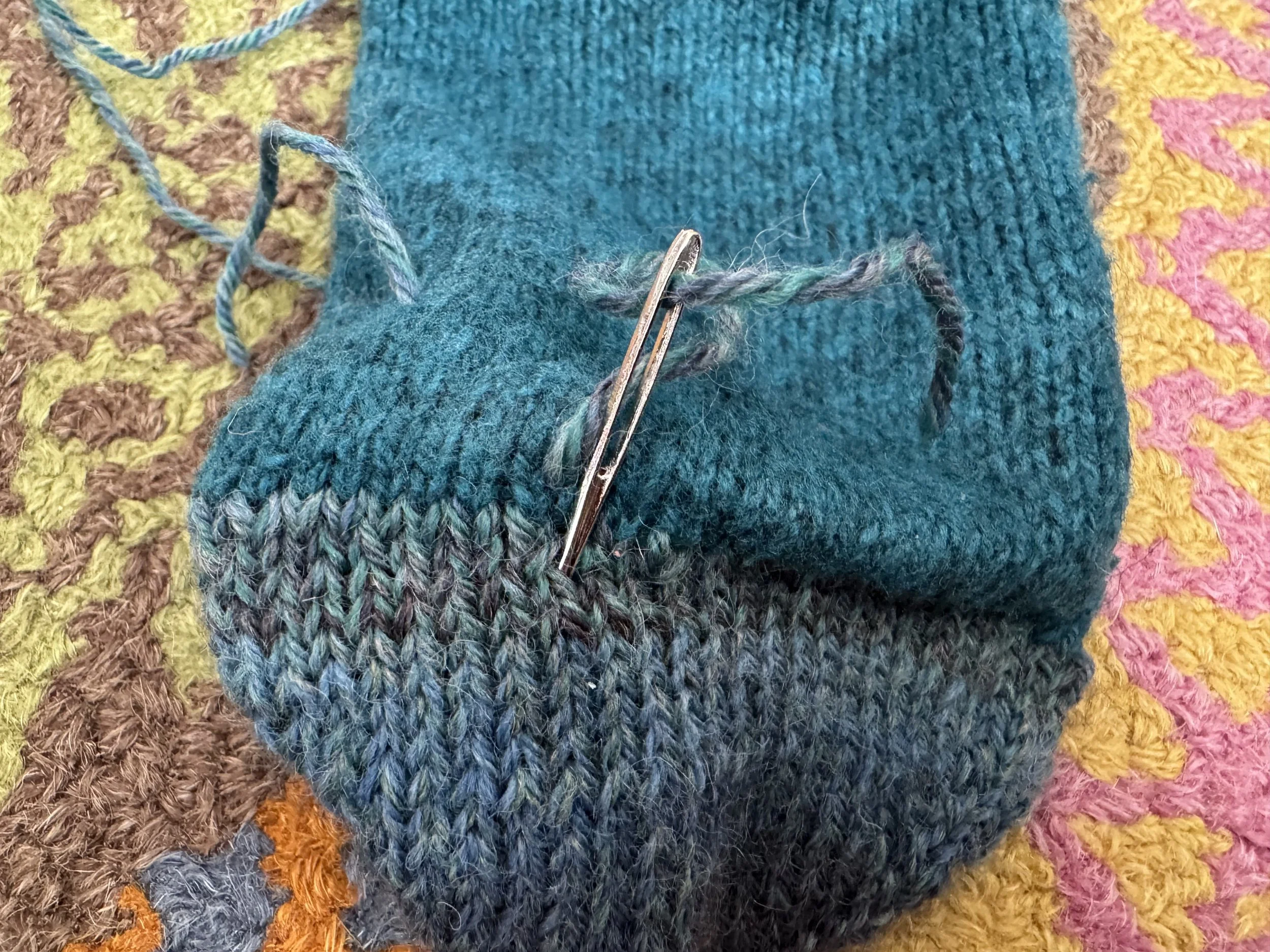
other end goes in
I push through the ends so that the yarn either finishes a knitted “V” or doubles over another thread in a knit stitch.
-
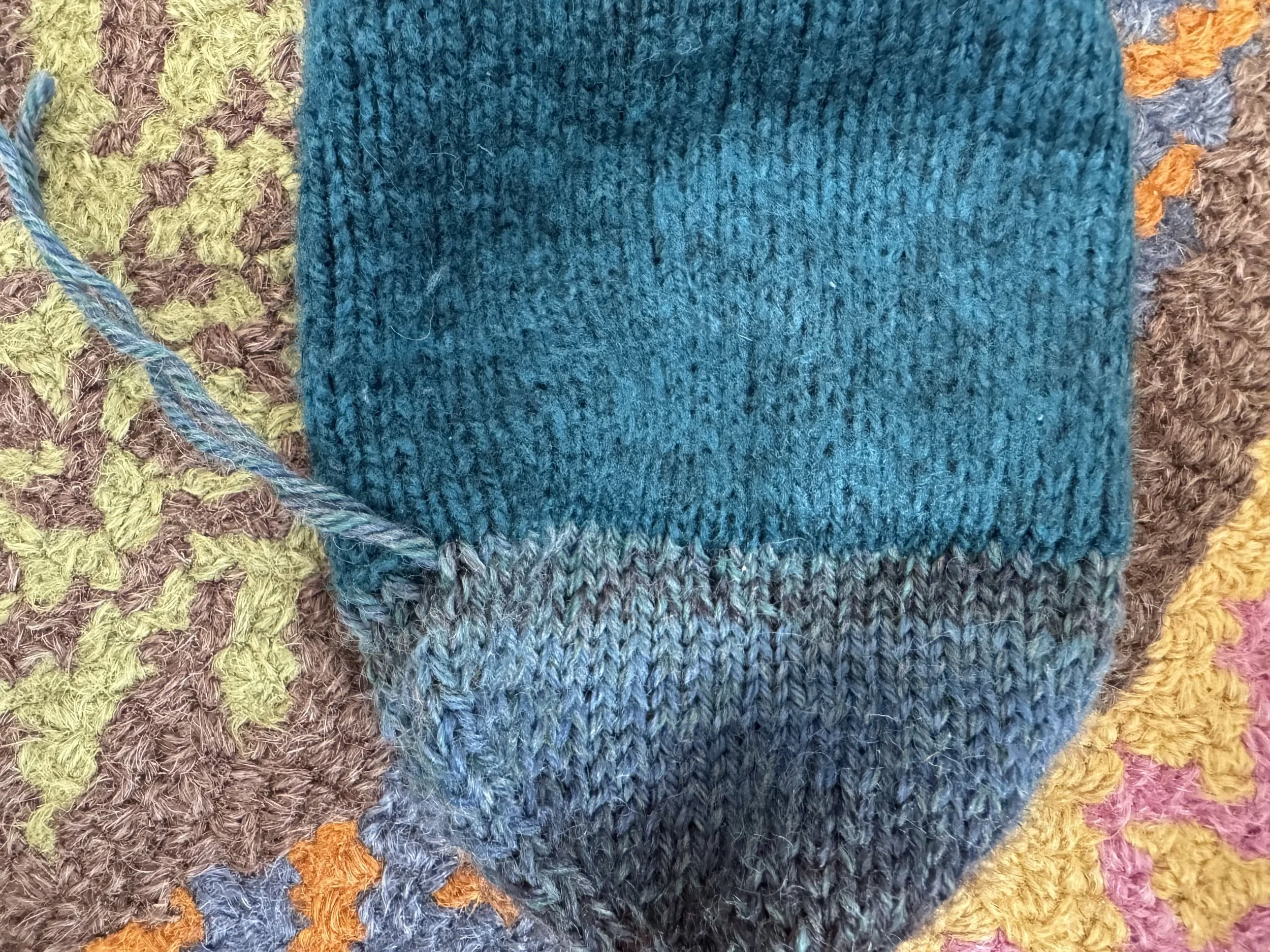
I can still see it
But if you were on the other side of the room and looking at the bottom of my foot . . .
-
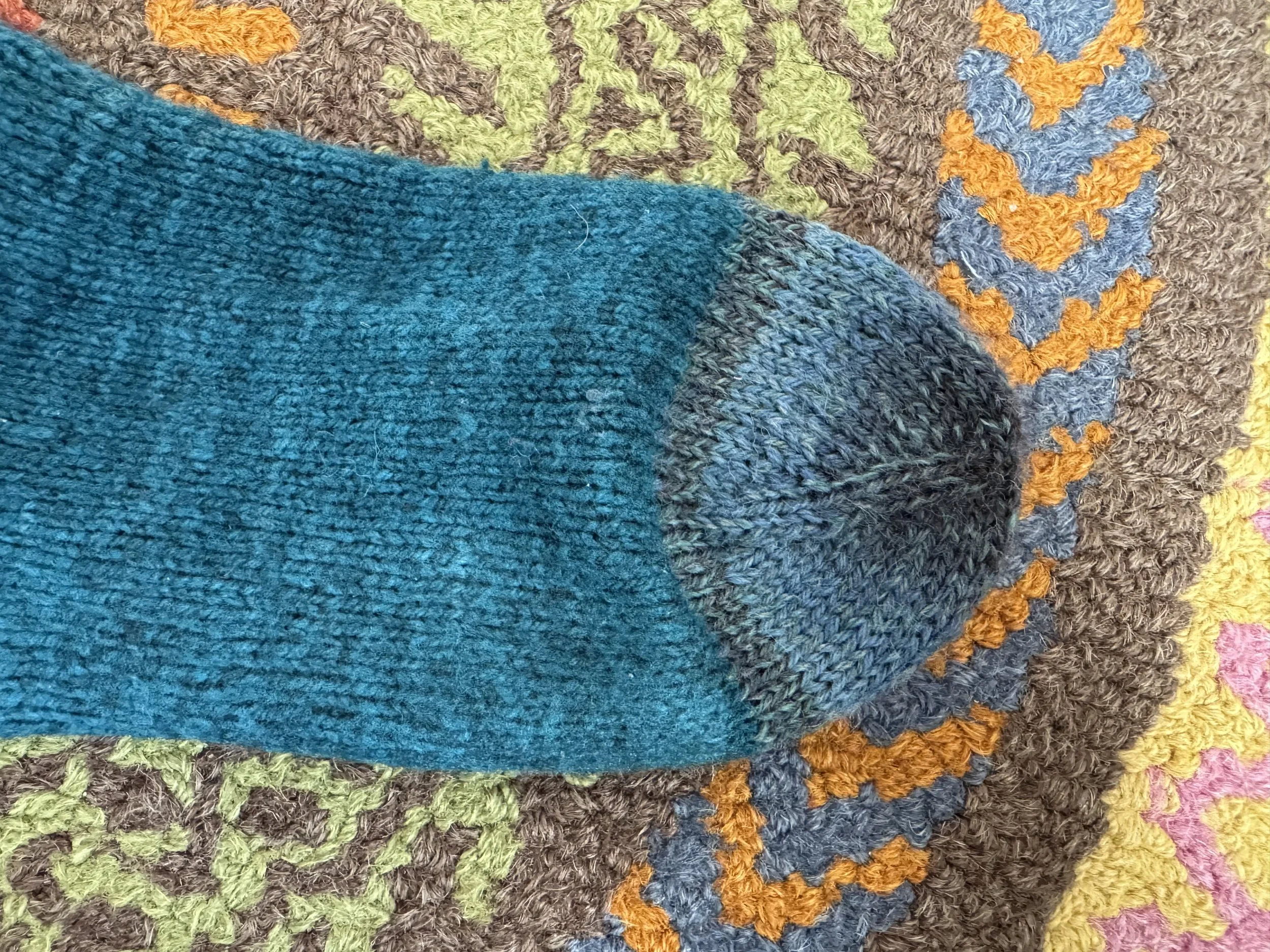
-

-
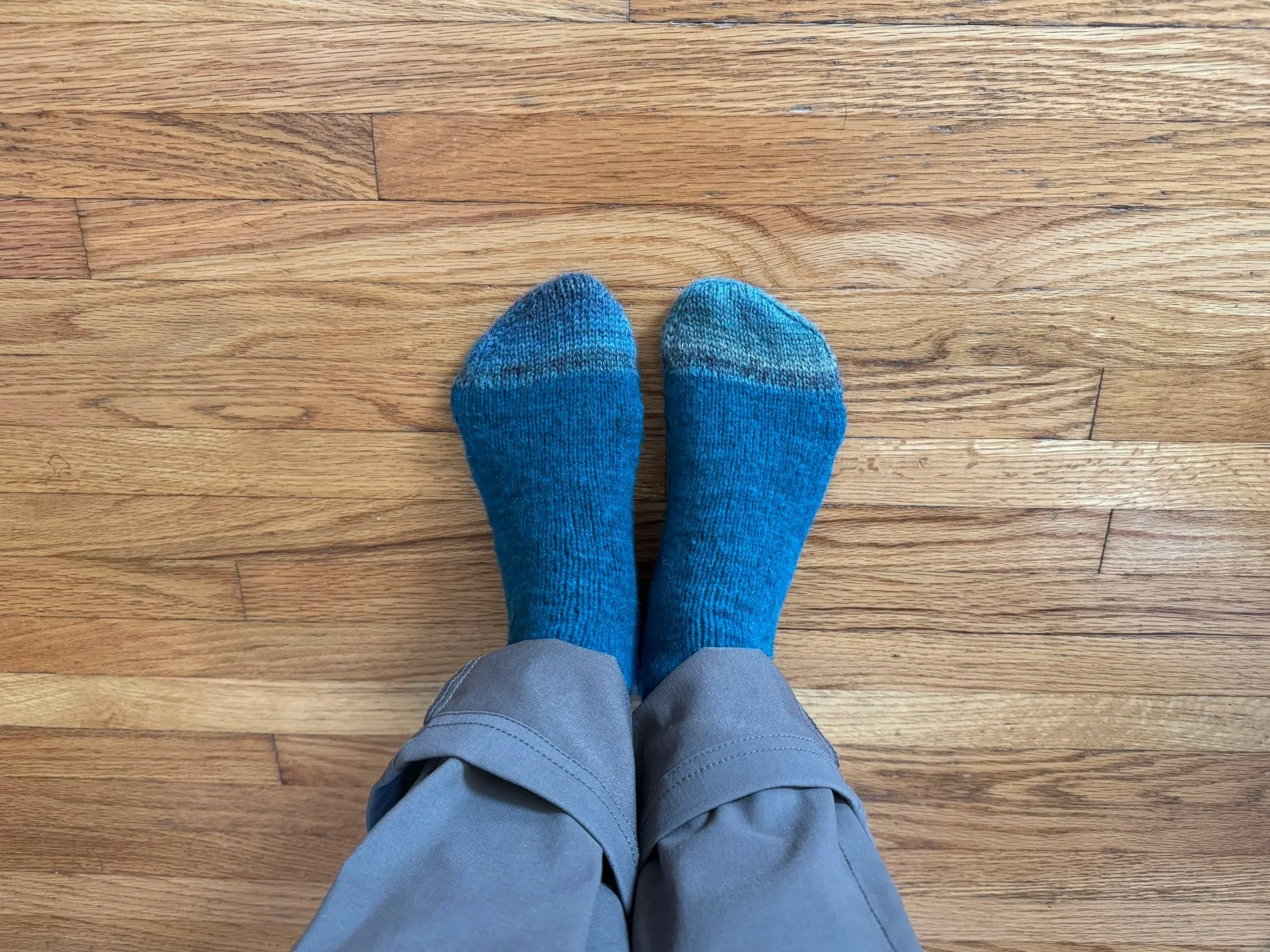
all done!
-
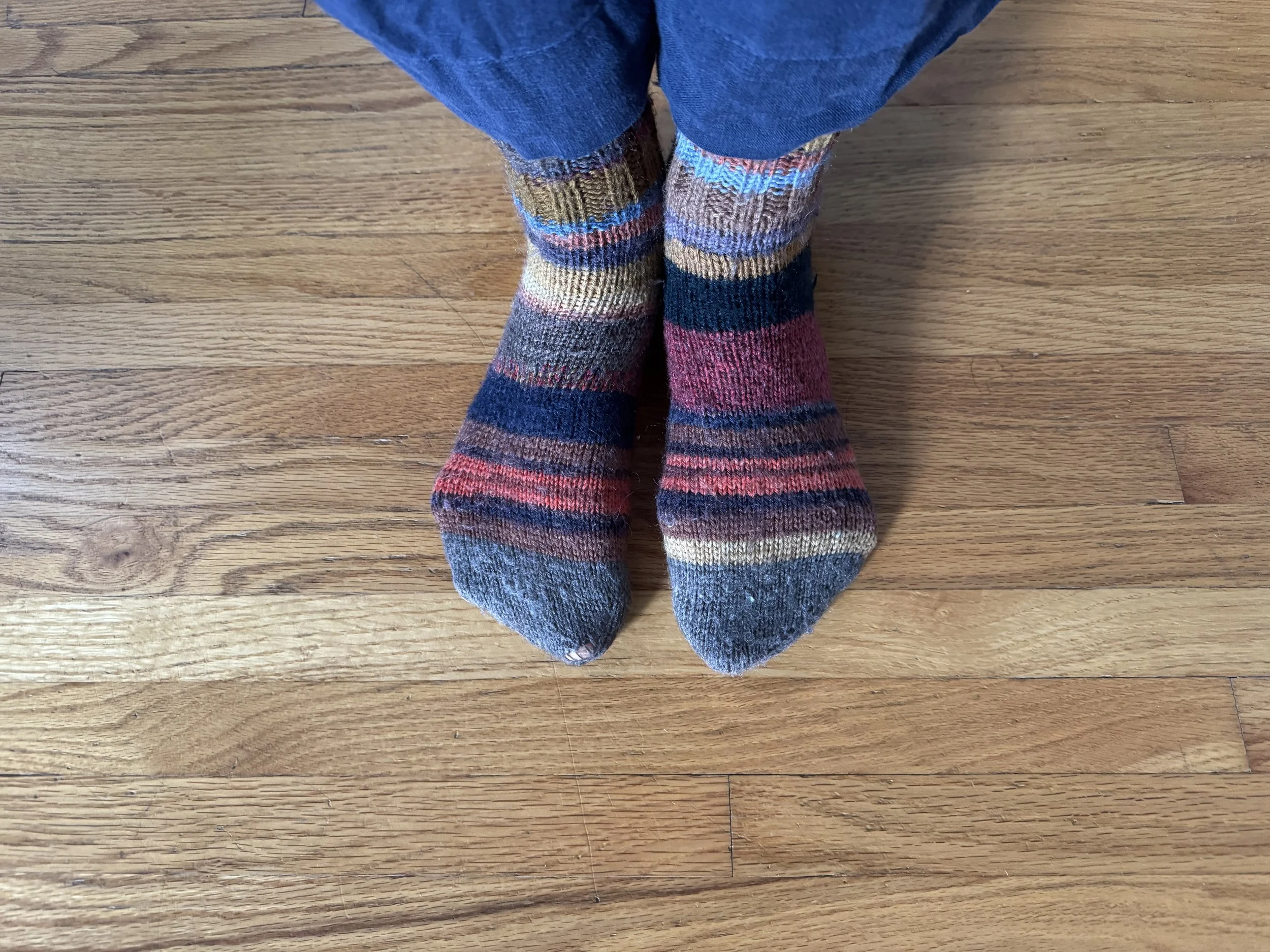
I think I'll do this again
Here is another pair of socks requiring toe work; I knitted these with random leftover yarns, and the yarn I used for the toes has not been durable.
-
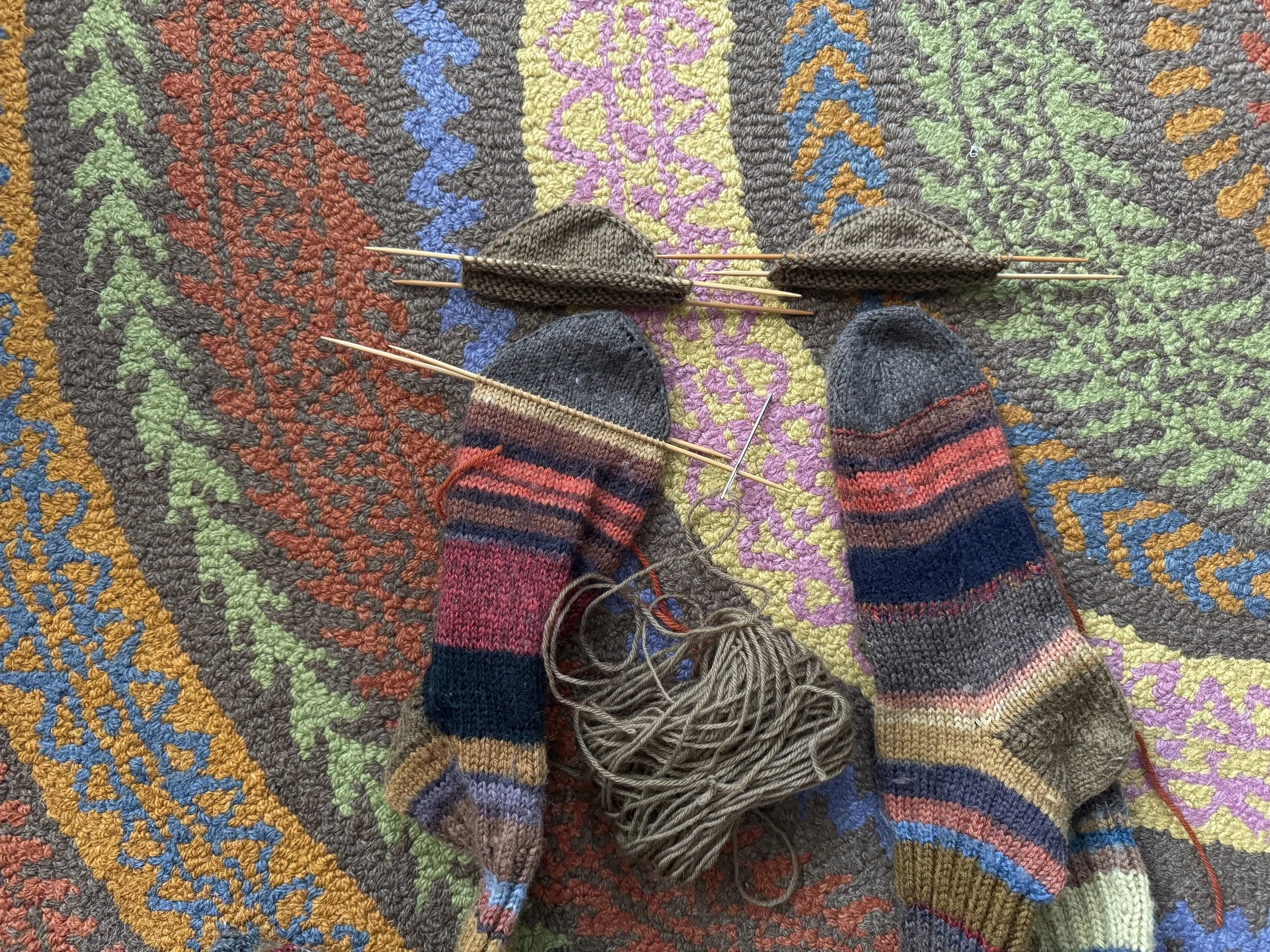
the new toes are knitted
I used some leftover yarn that I dyed with st john’s wort and then mordanted with iron. These old toes are easier to remove than the first pair’s, because the color change gives me a clear line to feed my needle through.
-
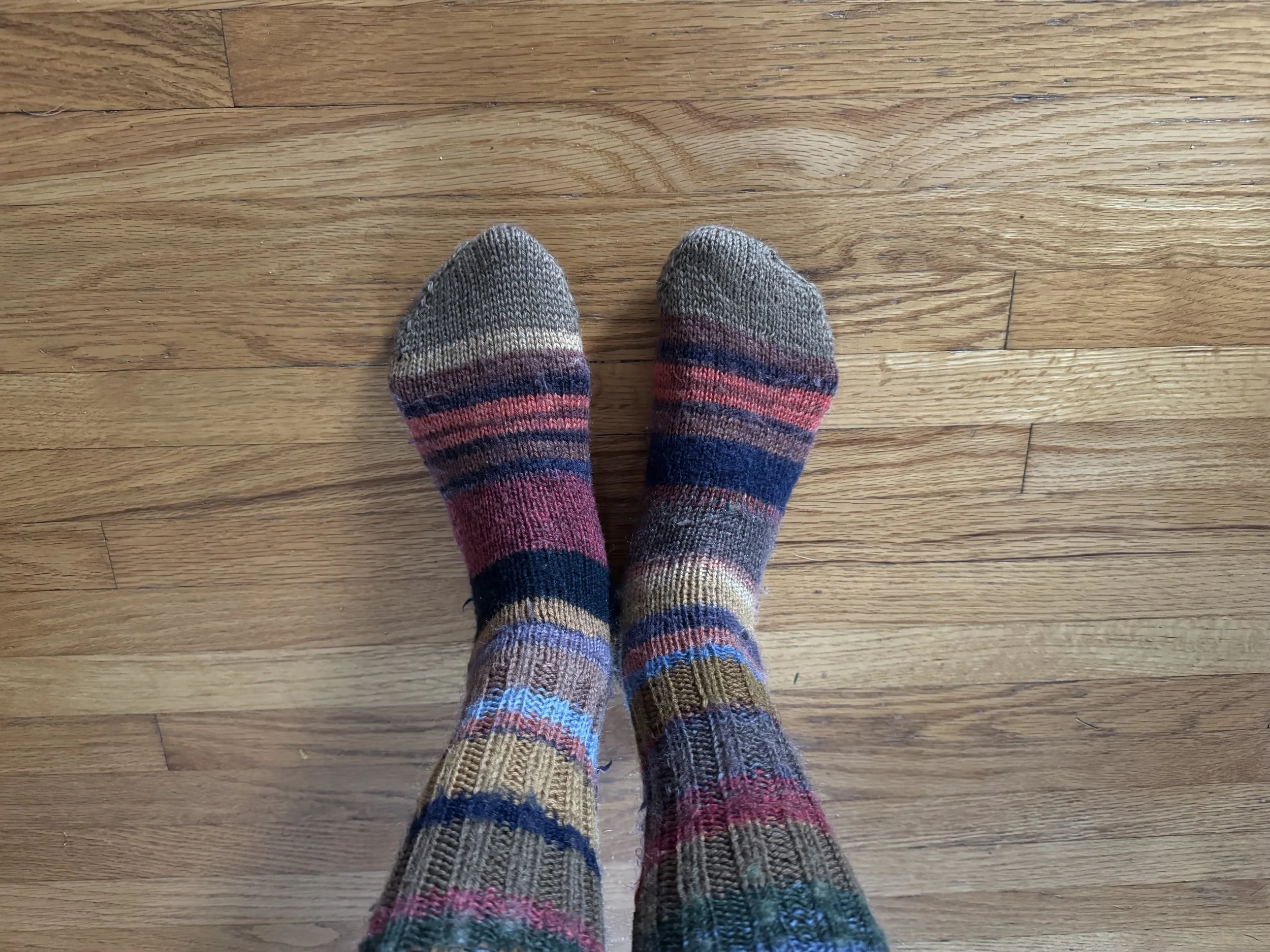
ta-da!
They are all done and are ready for new adventures.